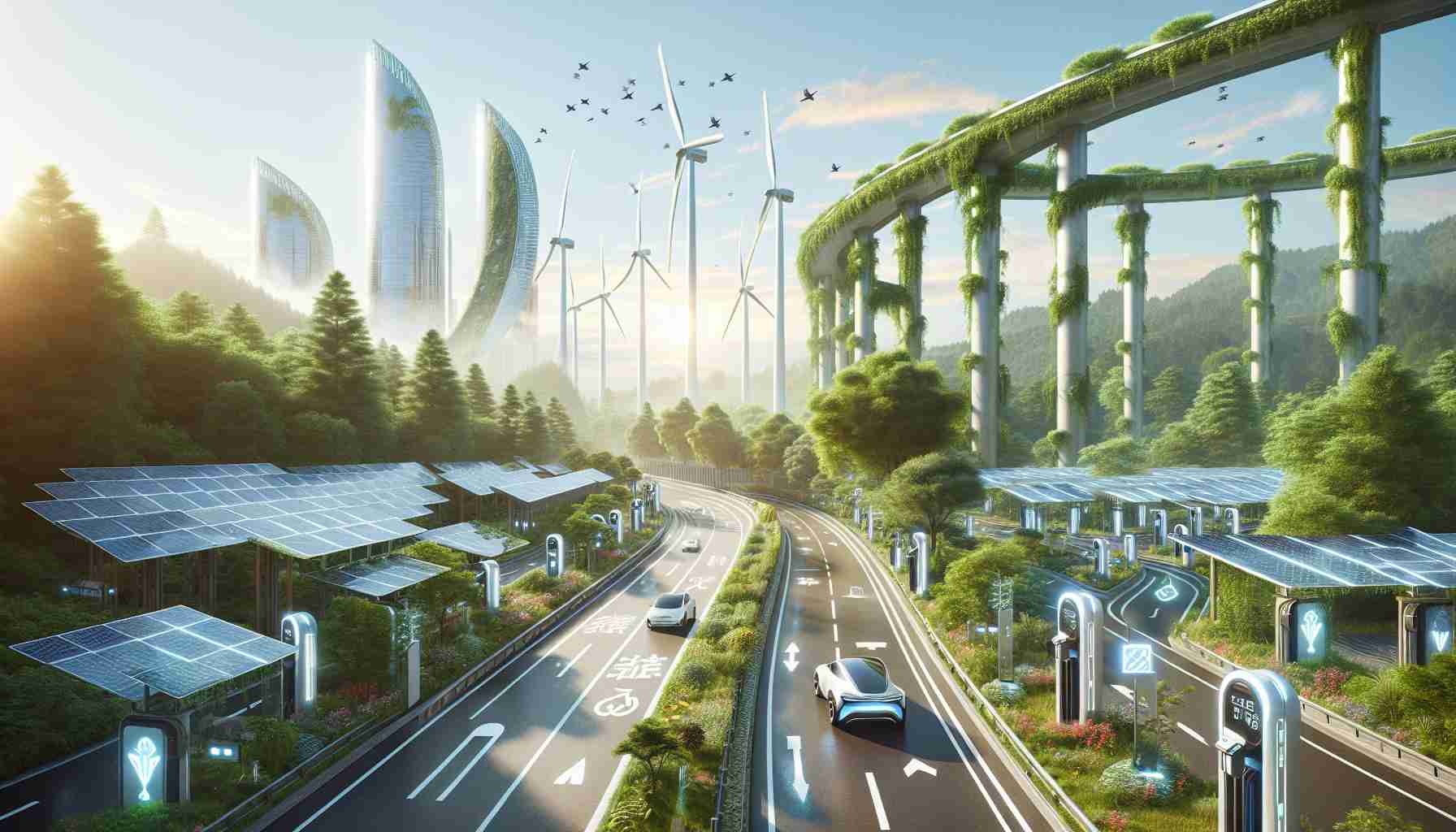
China has inaugurated its first-ever zero-carbon highway, marking a revolutionary step in sustainable travel. The Jinan-Hefei Highway, a remarkable 152.7 km stretch known for its green features, is designed to significantly reduce environmental impact.
The highway is an expansion of the G35 Jihe route, now boasting eight lanes and a maximum speed of 120 km/h. It includes three service areas, two parking zones, and ten toll stations, all engineered with sustainability in mind.
Renewable energy is at the heart of this project. Innovative technologies such as distributed solar panels, small wind turbines, and geothermal systems are in place to minimize emissions. Authorities project that although the highway will generate around 13,600 tons of carbon annually, the eco-friendly systems are anticipated to neutralize 22,500 tons, yielding a net reduction of 9,000 tons each year.
The infrastructure includes solar panels across key locations that will generate approximately 33 GWh of electricity from a 30 MW capacity. With additional energy storage capabilities, the highway ensures a steady supply of power.
Utilizing sophisticated monitoring technology, the Shandong Hi-Speed Group has implemented a real-time operations platform to oversee maintenance and ensure efficiency. The Jihe Highway is set to play a critical role in China’s ambitious plan to expand its highway network significantly while advancing environmentally friendly practices.
China Unveils Its Green Future with Revolutionary Zero-Carbon Highway
The launch of China’s first zero-carbon highway, the Jinan-Hefei Highway, marks a significant milestone in the country’s pursuit of sustainable transportation. As a pioneering project covering 152.7 km, this highway integrates various green features designed to minimize environmental impact, setting a precedent for future infrastructure development.
Key Features of the Jinan-Hefei Highway
The Jinan-Hefei Highway is a notable extension of the G35 Jihe route, featuring:
– Eight lanes to accommodate heavy traffic efficiently.
– A maximum speed limit of 120 km/h, allowing for quick travel while maintaining safety protocols.
– Three service areas equipped with modern amenities.
– Two large parking zones for vehicle user convenience.
– Ten toll stations strategically placed to facilitate traffic flow.
Renewable Energy Innovations
Renewable energy lies at the core of the Jinan-Hefei Highway’s design. The project incorporates:
– Distributed solar panels strategically installed along the route to harness solar energy.
– Small wind turbines that complement solar energy generation.
– Geothermal systems which provide additional energy sources while reducing carbon emissions.
Projected carbon emissions from the highway amount to approximately 13,600 tons per year; however, the renewable energy systems are expected to neutralize 22,500 tons. This green approach provides a net reduction of 9,000 tons of carbon emissions annually, highlighting the highway’s significant role in combating climate change.
Energy Generation and Storage Capacity
The highway features a robust energy system with solar panels generating around 33 GWh of electricity from a 30 MW capacity. Furthermore, the incorporation of advanced energy storage solutions ensures a reliable power supply, maximizing the efficiency of the highway’s operations.
Technological Integration for Smart Management
To enhance operational efficiency and maintenance, the Shandong Hi-Speed Group has implemented a sophisticated real-time operations platform. This innovative monitoring technology allows for prompt maintenance and ensures the highway runs efficiently, contributing to overall sustainability goals.
Implications for China’s Transportation Network
The Jinan-Hefei Highway is a key component of China’s broader initiative to expand its highway infrastructure with a focus on environmental sustainability. As part of this ambitious plan, the highway serves as a model for balancing development needs with commitment to reducing carbon footprints and environmental impacts.
Pros and Cons of Zero-Carbon Highways
Pros:
– Significant reduction in greenhouse gas emissions.
– Utilization of renewable energy sources enhances energy security.
– Innovative technologies promote smarter infrastructure management.
Cons:
– High upfront costs associated with building sustainable infrastructure.
– Maintenance of renewable energy systems requires ongoing investment.
– The scalability of such projects may be limited by regional resources.
Conclusion
The dedication of resources towards creating a zero-carbon highway showcases China’s commitment to a sustainable future in transportation. As other regions consider similar initiatives, the Jinan-Hefei Highway is poised to set a global standard for eco-friendly infrastructure.
For more detailed information about China’s transportation initiatives, visit China Daily.



